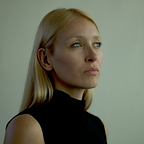What Are You Ready to Do to Preserve Data Quality?
(back from the first edition of the API Culture Day on 28th June 2019 in Lyon, France)
Following up on my two last articles gathering the learnings from our first API Culture Day. Organized by biinlab in collaboration with We Are Museums at the Museum of Fine Arts of Lyon in France last June 28th, we had the pleasure to hear Philippe Rivière, Head of Communications and Digital Departments at Paris Musées, talking about the opening of the collections of the Parisians museums and the use of an open-API to facilitate literally the life of everyone.
To our great surprise, we learned from the beginning of Philippe’s speech that the 14 museums in Paris have been using APIs for years under the supervision of “Paris Musées”.
Indeed, in May 2016, Paris Musées embarked on the redesign of the websites of Parisian museums to highlight collections and news while avoiding the loss of time and value in the duplication of data. The main novelty that the Paris Museums APIs allowed was the creation of a website dedicated to the network to gather all the information from the 14 museums with the minimum of manual entry.
On this website, only the pages “About” and the “News” from the website have been produced manually, everything else is automatically updated from the museum sites thanks to smart APIs: collections, practical information, and agenda.
The quality of the data is primordial for the “Agenda” part of this network website, which will then feed the Paris City Hall website and the ministerial agenda. Here, the usual flow of data from museum sites to the network site does not work so well. Indeed, despite the rigour of the teams and the desire to find a standard terminology to create replicable elements, the diversity of fields and institutions means that the process is not efficient. It is now a question of changing the direction of the data flow for this “Agenda” part. Museums will have to fill in a section within the website that will have been produced according to the requirements of the external official sites.
The second challenge is around the collections of Parisian museums with a target of 600,000 works online by the end of 2020. The project began with a redesign of the website, which brings together the various existing databases and becomes a single silo. It is an API system that allows feeding the websites of Parisian museums but also the mediation and communication tools available. This system will enable you to keep control over the quality of the content broadcast and avoid duplicate entries when content needs to be updated. The next step is to open the API of the Parisian museums at the beginning of 2020 so that everyone can find information about the collections and the images related to them. The public domain content will thus be accessible under Creative Commons.
Once again, the quality of the data offered in Open Content is crucial and challenging. In this case, the online collection is built from three databases with different attributes and organizations. An API has thus been created between two databases to make the two contents interact and enrich them without having to intervene manually.
Philippe concluded his speech by recalling that the opening of an API is accompanied by collaborations with different partners to animate communities, show good examples and guide uses.
This was the third part of the review from our first API Culture Day organised in collaboration with biinlab. Soon, I will publish the review from the workshop we ran right after the speeches — get ready for some great conceptual + practical ideas of a future of museums mixing open APIs and AI!
